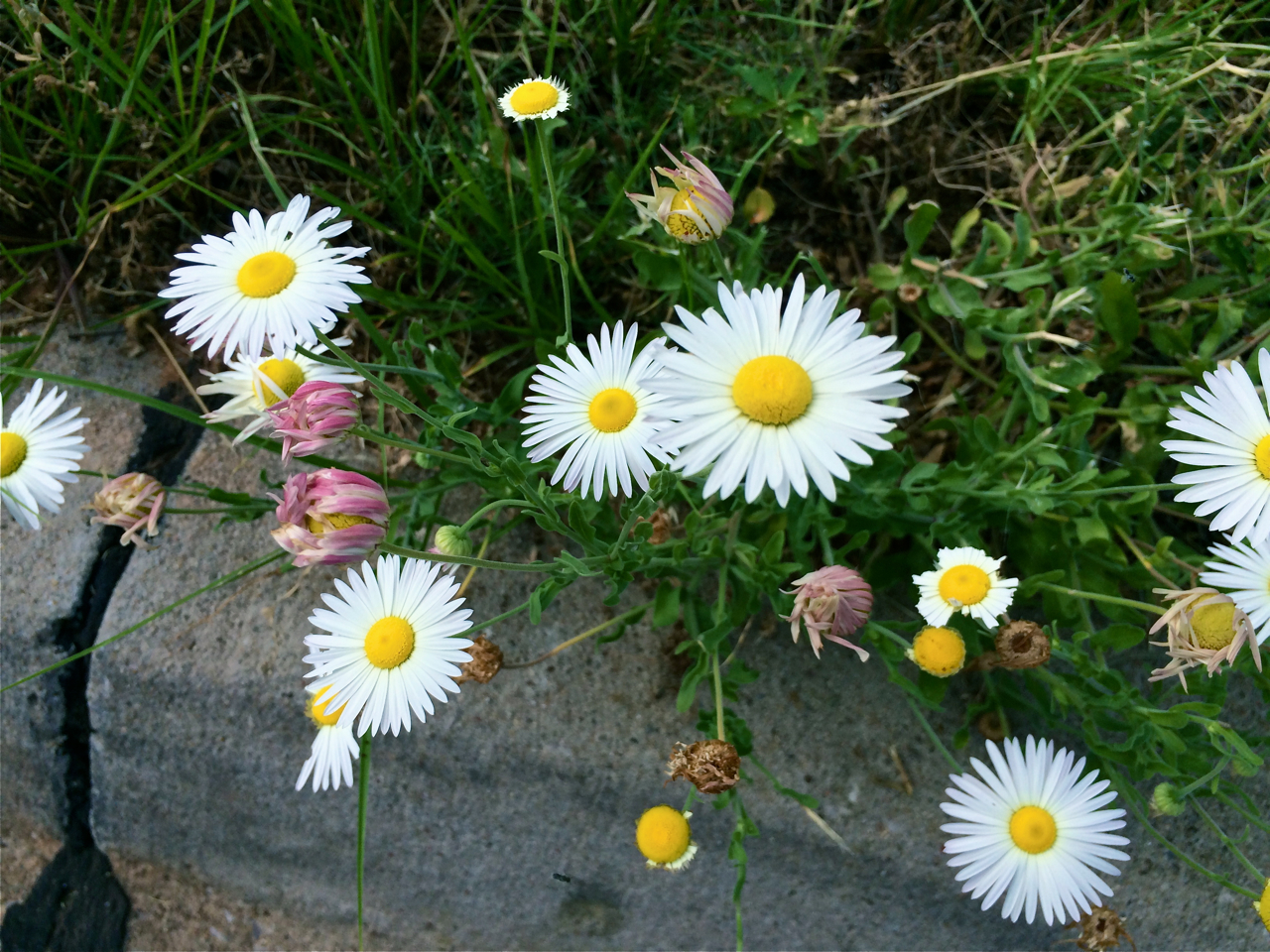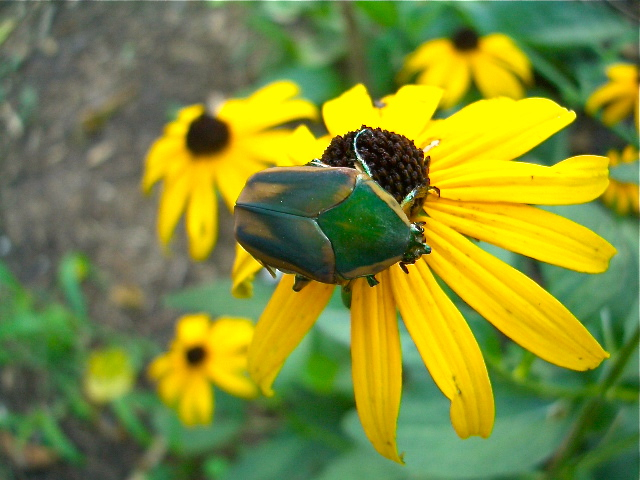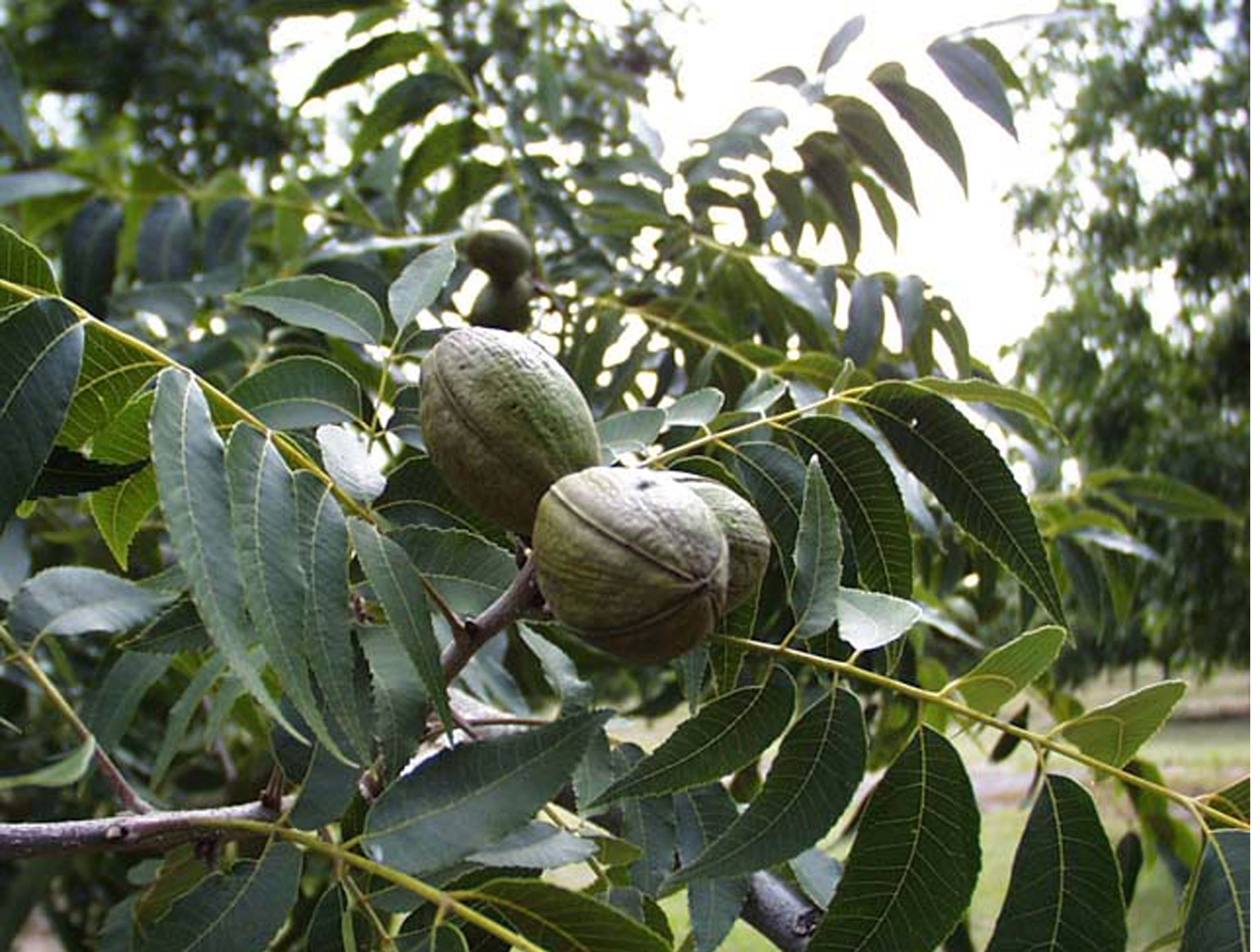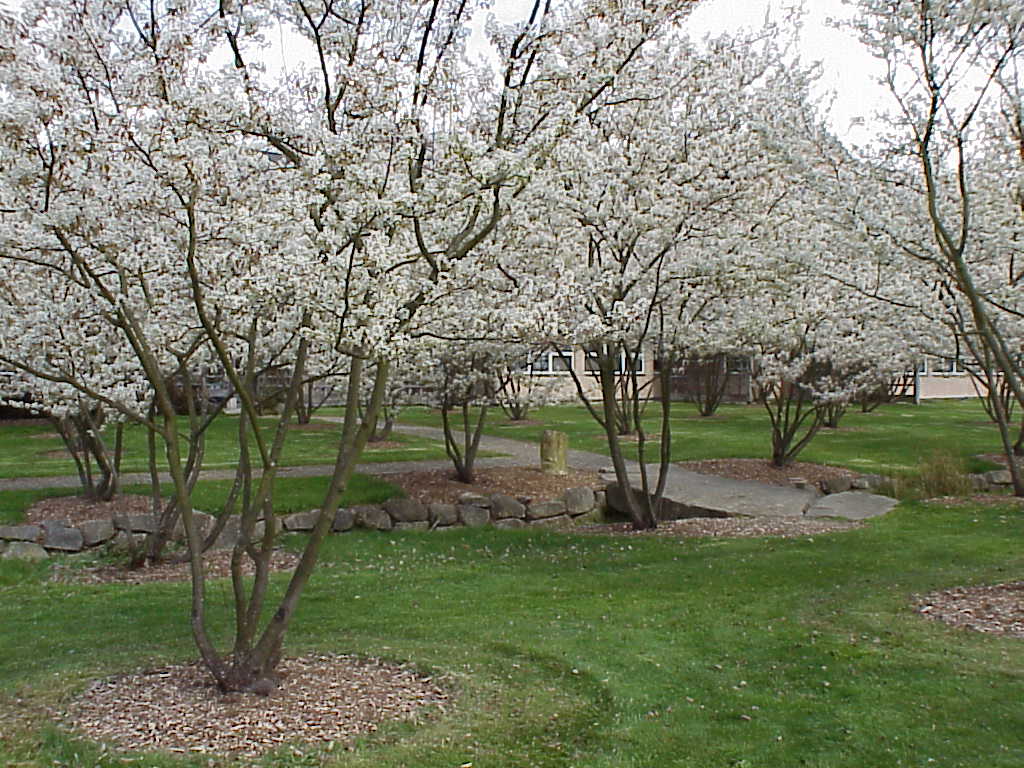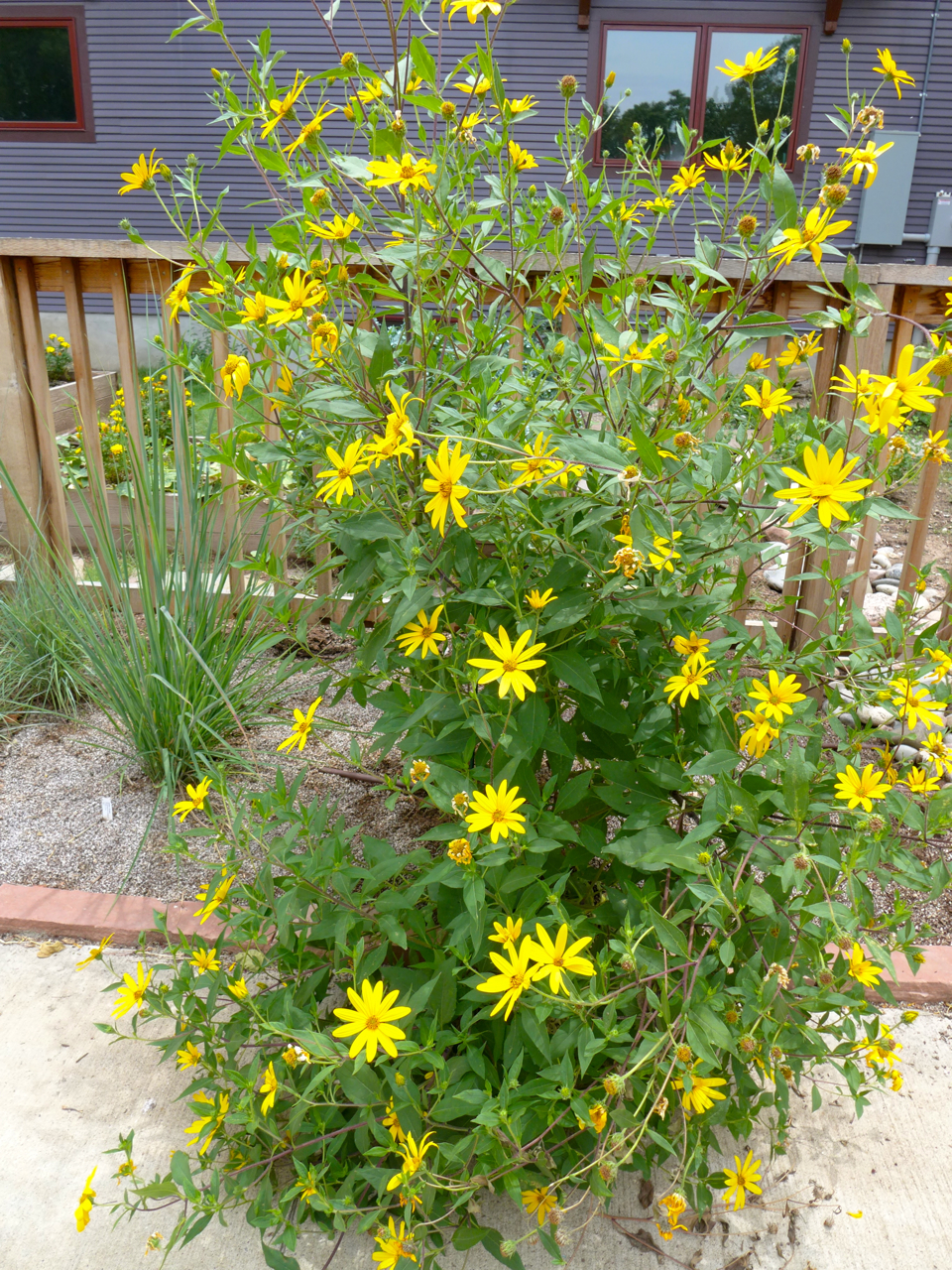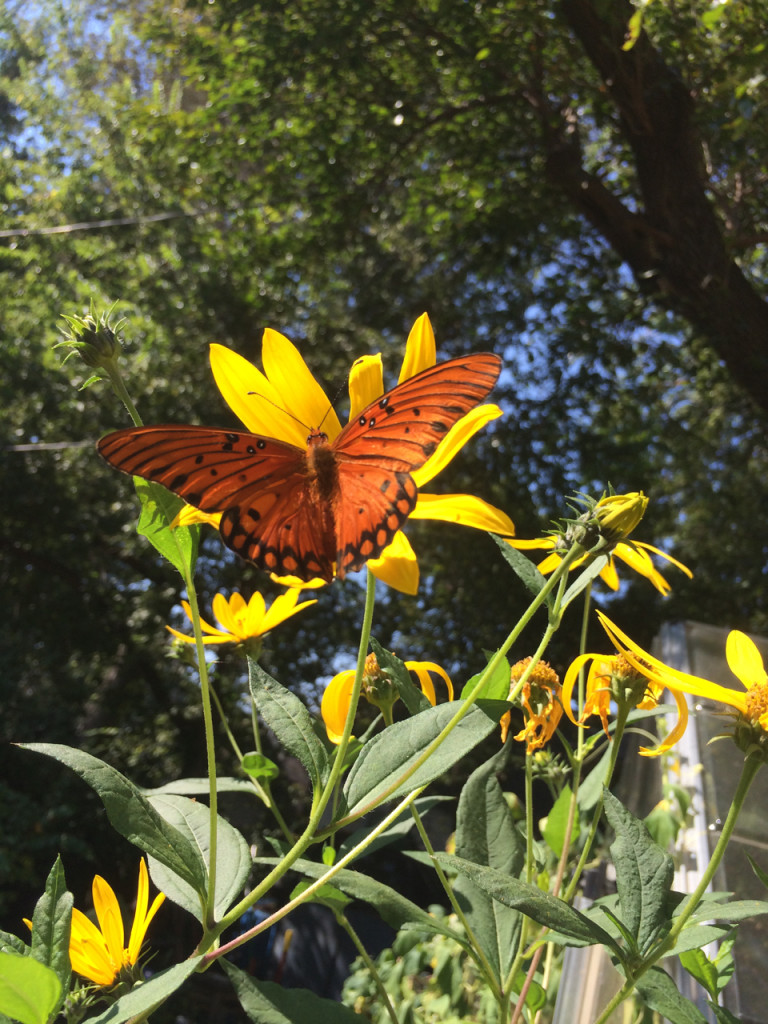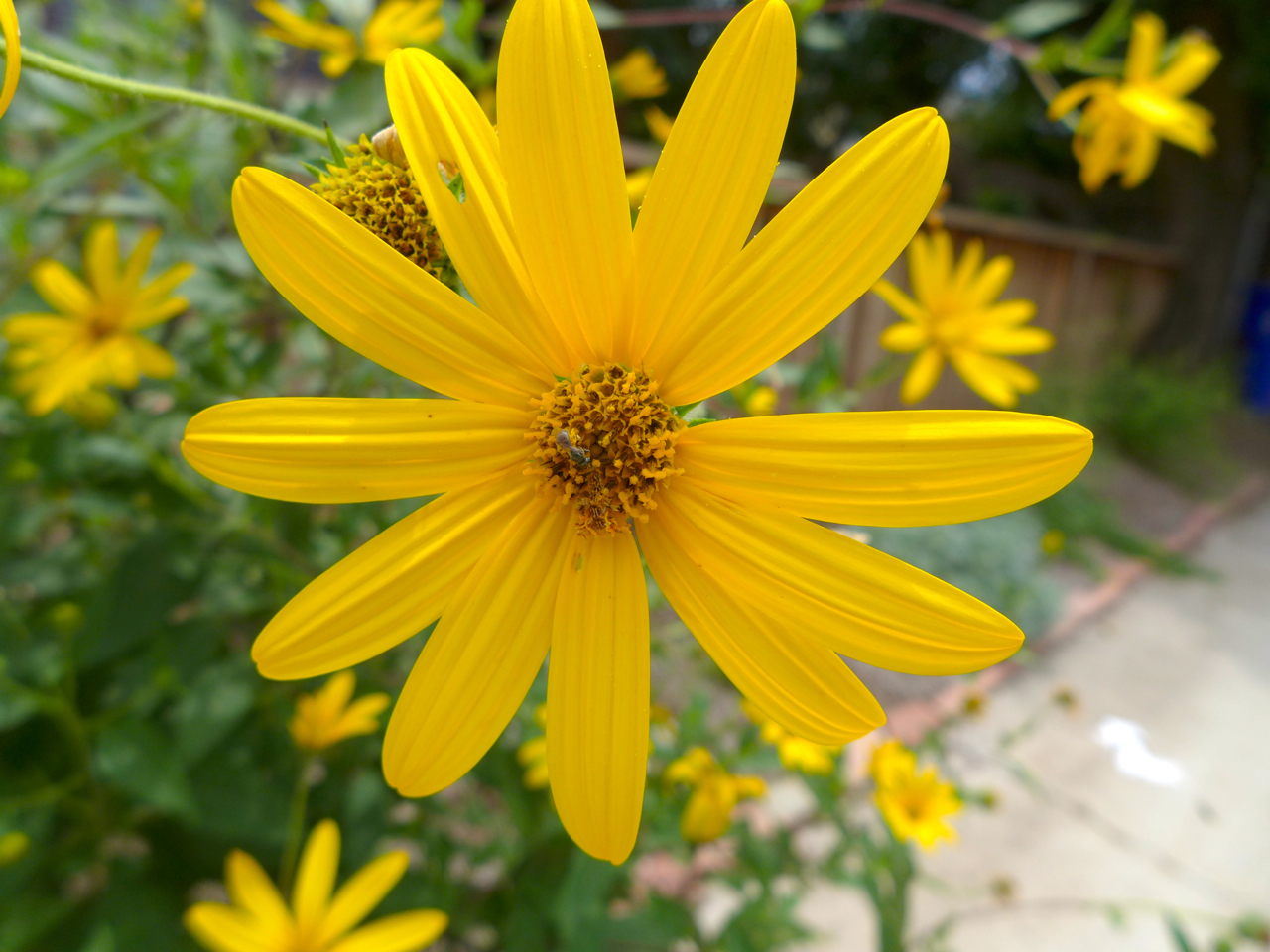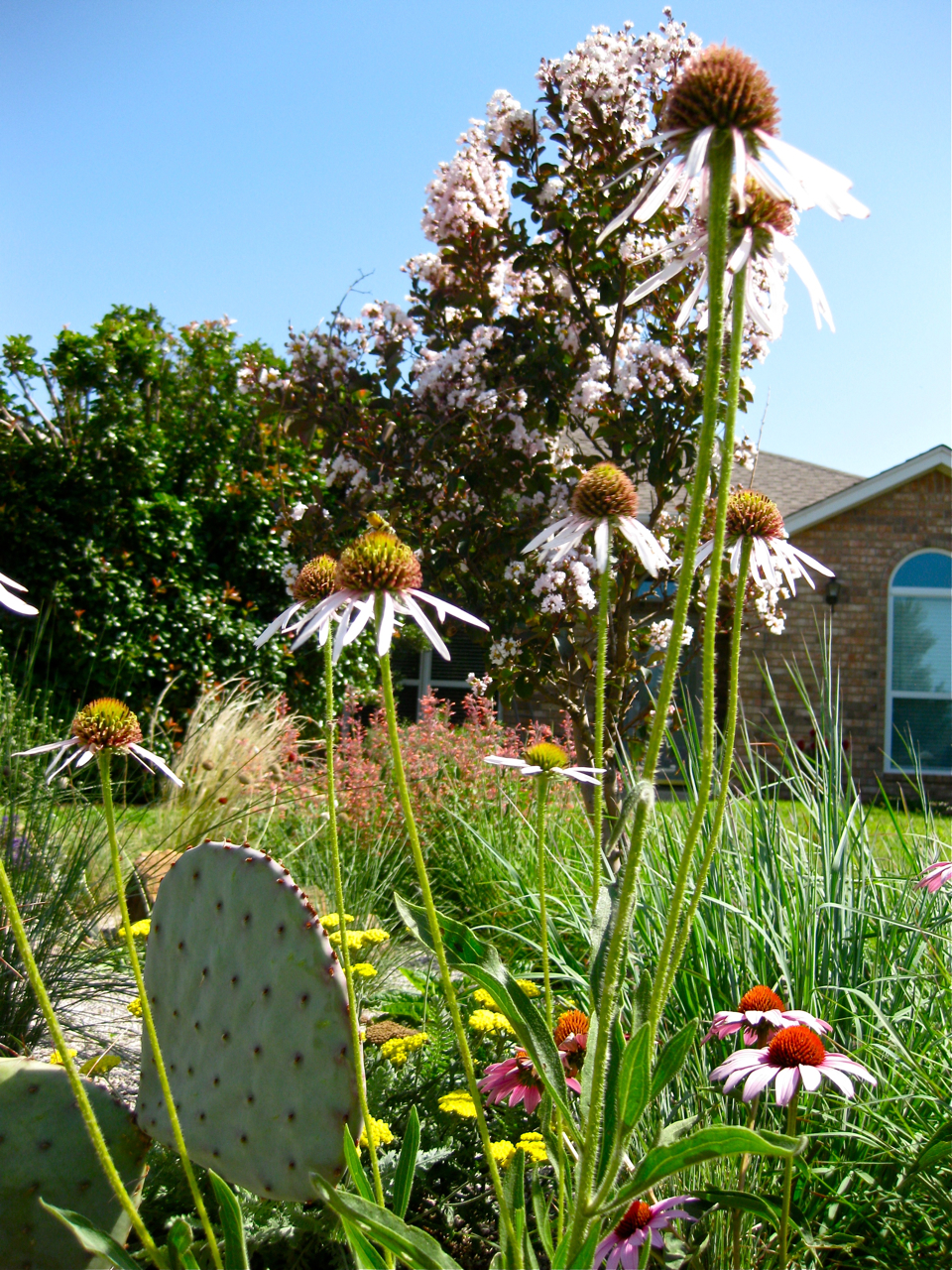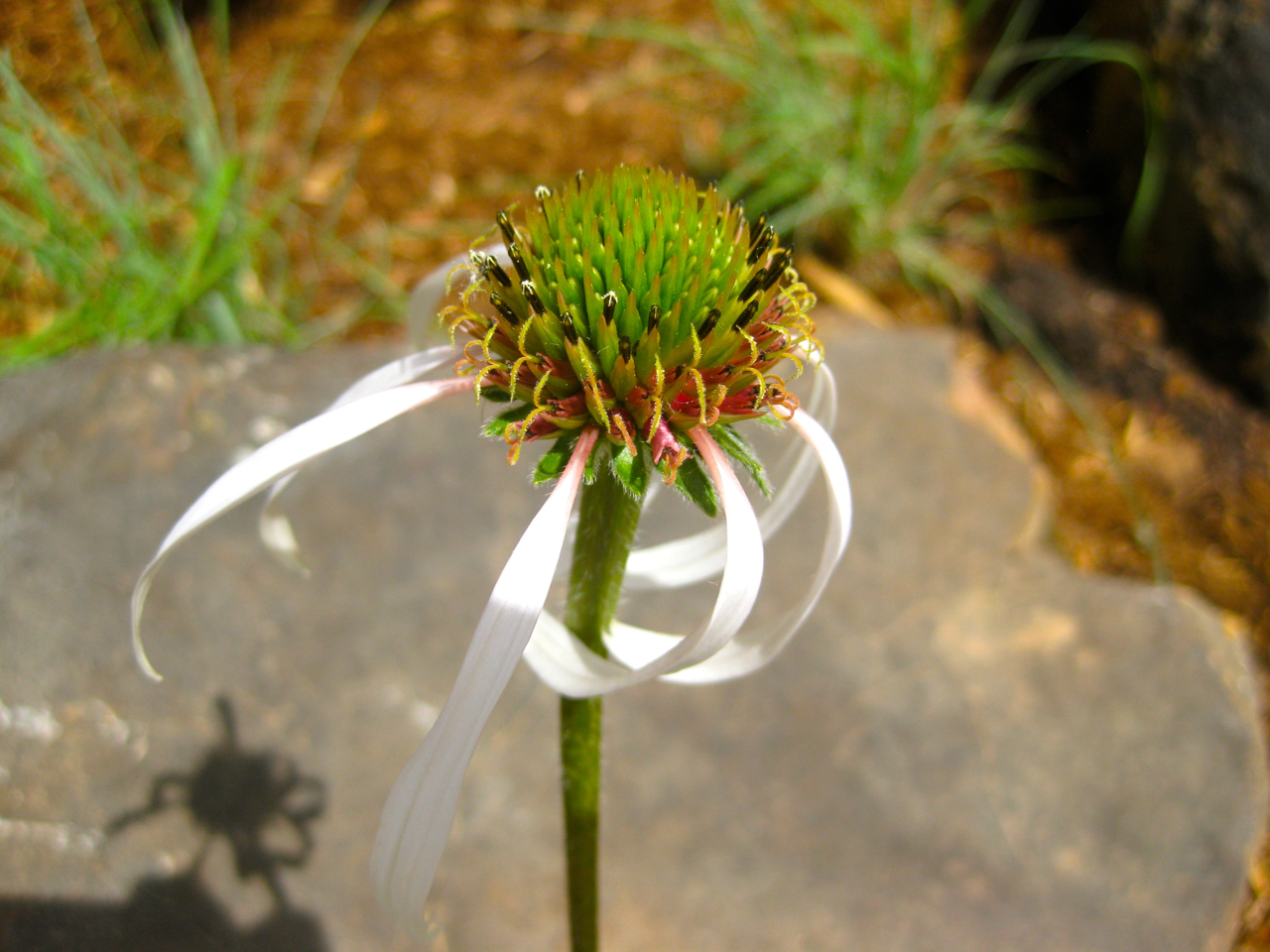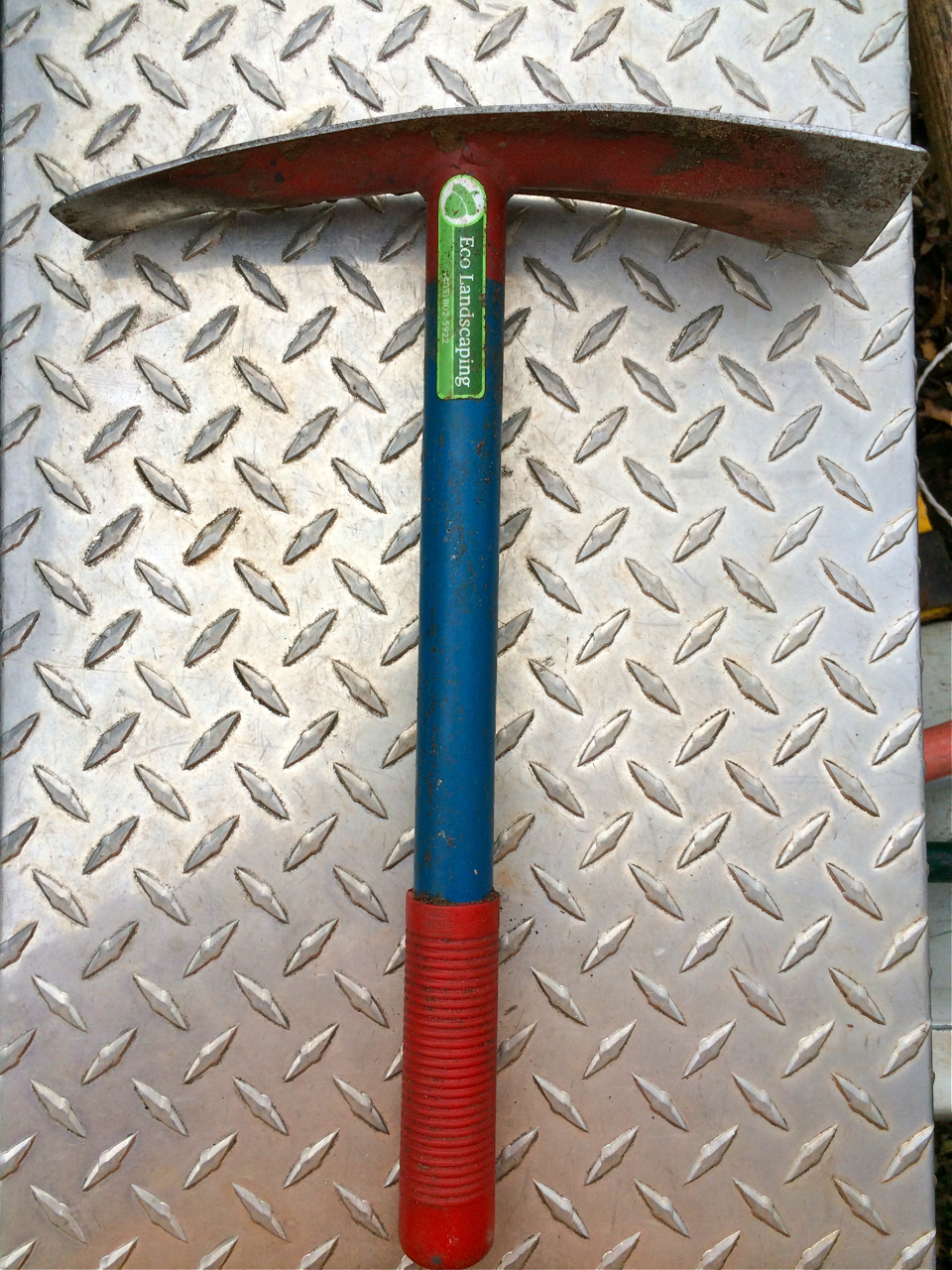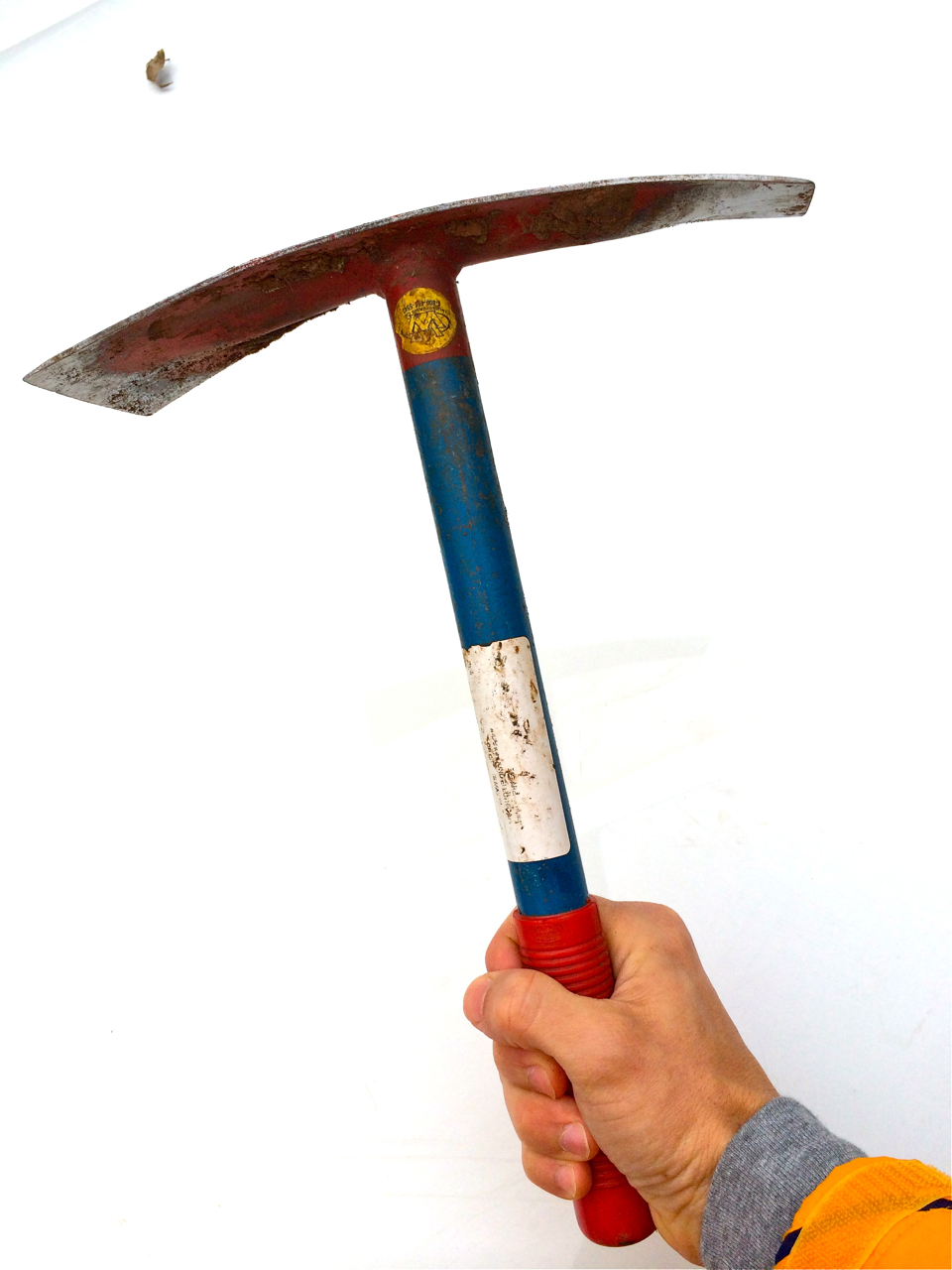
Purple prickly pear. Probably Opuntia macrocentra.
Opuntia (prickly pear) is a large and intriguing but often confusing genus of cactus. There are a number of Opuntias species native to Oklahoma and in general many Opuntias seem to do well here. Their unique form adds a striking contrast to the more common herbaceous and shrubby plantings. Like most of our favorite plants prickly pears are multi use plants that provide beautiful flowers, delicious fruit and attractive appearance. They are very drought tolerant and very low maintenance. We have been collecting various specimens in the area and have a number to choose from although it’s often difficult to discern which species or hybrids we have. Contact us for more information on our current Opuntia availability. Here’s a list of some of the species we’ve had good luck growing.
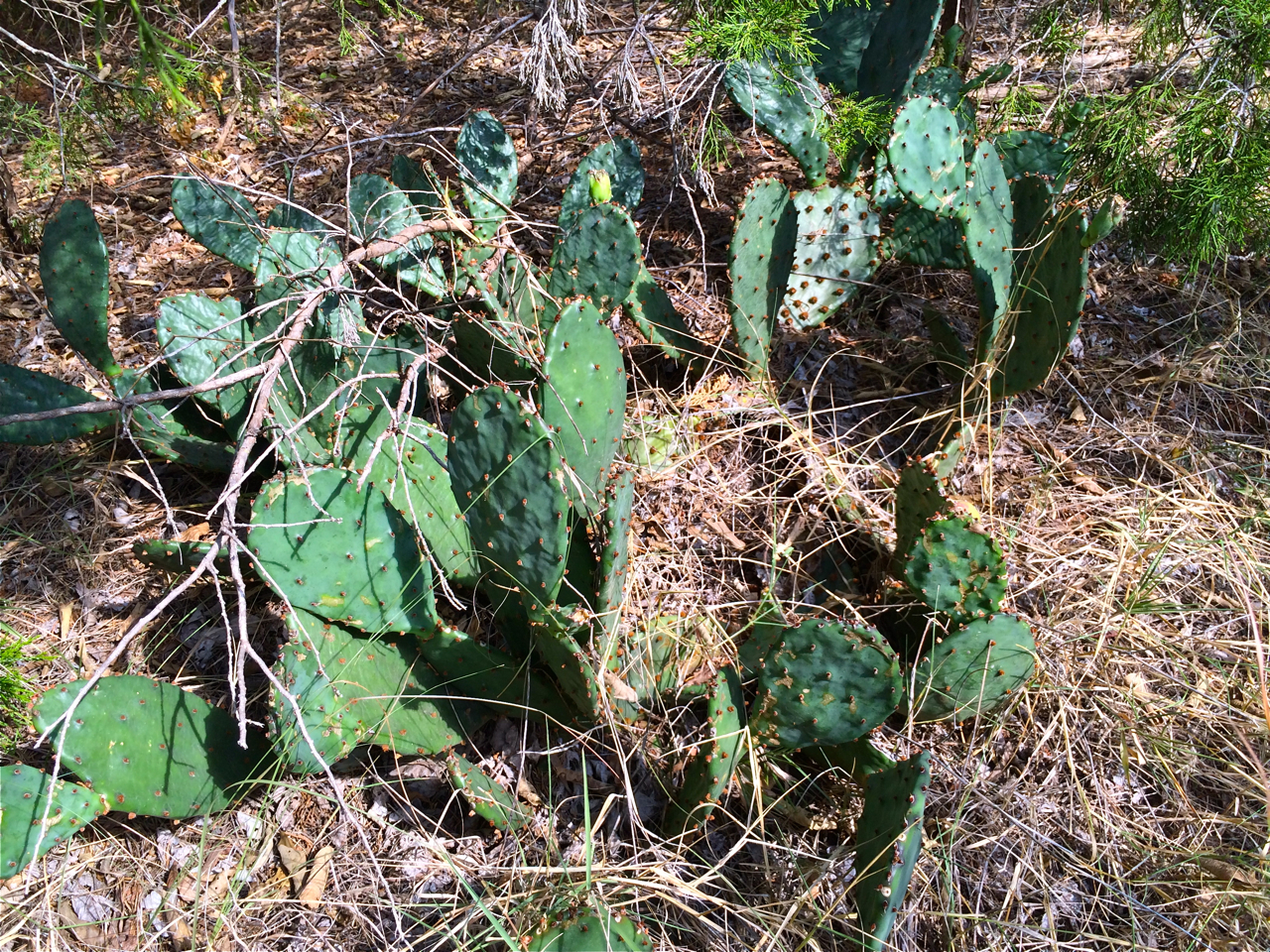
Opuntia humifusa or macrorhiza at Sutton Wilderness Norman, OK
Opuntia Humifusa (Eastern Prickly Pear Cactus)
Height: ¾ feet -2 feet
Spread: 3-4 feet
Type: Perennial (Cactus)
Origin: Native to Eastern United States from Massachusetts to Minnesota and south to Oklahoma and Florida
Exposure: Sun to partial shade
Water: Low (heat tolerant)
Edible: ripe fruit edible raw or in jellies, the pads are also edible (watch out for bristles!); however, be careful because the barbed hairs or ‘glochids’ in clusters on the stems can cause severe irritation.
Medicinal: peeled pads are used to poultice wounds, applied the juice to warts, and drank pad tea for lung ailments
Companions : Schizachyrium scoparium (little bluestem), Rudbeckia fulgida (black eyed susan), Rosmarinus officinalis (rosemary), Baptisia (false indigo), Agastache (anise hyssop)
Notes: The Eastern Prickly Pear is native to much of Oklahoma and is a low growing smallish Opuntia. It produces brilliant (usually) yellow flowers from May through July. Not specifically a desert plant but instead thrives in places where there is water run-off part of the year and hot and dry the rest. Because of this behavior it is often found in rocky outcrops and on bluffs in sandy soil. It’s small size and rugged appearance, and adaptability make it a good choice for many landscaping situations.

Opuntia bloom
Opuntia Macrorhiza (Common Prickly Pear)
Height: ½ foot -1 ½ feet
Spread: ½ foot – 3 feet
Type: Perennial (Cactus)
Origin: From Utah to Kentucky and south to Mexico
Exposure: Sun
Water: Low (heat tolerant)
Edible: ripe fruit edible raw or in jellies or candies, the pads are also edible (watch out for bristles!) raw or cooked
Medicinal: The sap is used for medicinal applications, the prickly pear can also be used as anti-inflammatory medicine or as a laxative. Even more recently it has been used to aid in exercise recovery and to help get rid of hangovers.
Companions: Schyzicarium scoparium (little bluestem), Rudbeckia fulgida (black eyed susan), Rosmarinus officinalis (rosemary), Baptisia (false indigo)
Notes: A more arid/western species but closely related to O. humifusa with whom it’s range overlaps in our state. The Common Prickly Pear produces bright usually yellow flowers but white, red, orange and pink flowers are also known to exist. It grows easily in dry sandy soils in full sun. Use much like O. humifusa but less tolerant of wet soils.
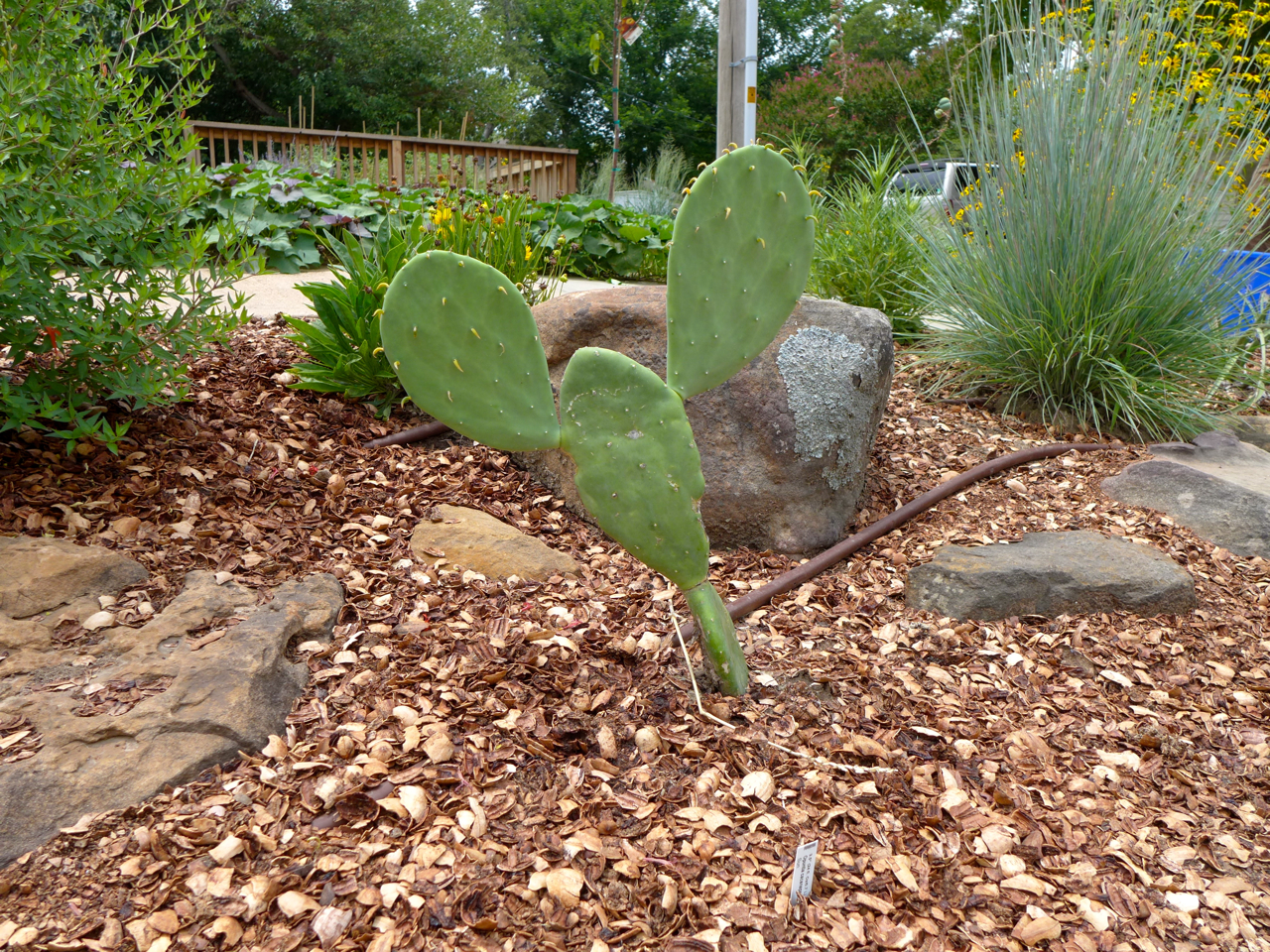
Opuntia cacanapa ‘elisiana’. Young specimen mickey mouse.
Opuntia Cacanapa “Ellisiana”
Height: 4 feet- 6 feet
Spread: 3 feet – 6 feet
Type: Perennial (Cactus)
Origin: A spineless selection of Opuntia cacanapa which grows in south Texas and into Mexico. Often mistakenly considered one of Luther Burbank’s famed thornless varieties.
Exposure: Sun
Water: Low (heat tolerant)
Edible: The pads are edible and primarily spineless which makes for easier and safer preparation
Medicinal: much like other prickly pears
Companions: Schyzicarium scoparium (little bluestem), Rudbeckia fulgida (black eyed susan), Rosmarinus officinalis (rosemary), Baptisia (false indigo)
Notes: Ellisiana is a relatively big and largely thornless prickly pear that is known to be hardy to at least 7a (most of Oklahoma). The pads have a lovely grayish tinge and the flowers are a bright yellow. Being largely spineless and free of glochids (barbs) Ellisiana may be our best variety for use as edible pads (nopales). Thanks for reading and good luck!
